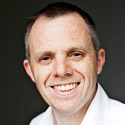|
|
|
Contributors | Messages | Polls | Resources |
|
Freesat CTO Discusses Analytics Platform In Part I of this interview, Matthew Huntington, CTO of Freesat, talked about the free satellite service and its new strategy to "vendorize" its multiscreen guide platform. The company recently announced it had licensed its connected guide platform, Metaphor, to Ireland's national broadcaster, RTÉ. It has decided to use technology developed in-house to drive new revenues and help create more scale for its platform, which can help with vendor negotiations and technology development. In Part II of his interview with Telco Transformation, Huntington talks about the operator's decision to roll out a real-time analytics solution. The service provides viewership data in real time. Using technology from TVbeat, it provides viewer activity data across channels and programs and offers programmers new insights into audience behavior. (See Freesat Launches Real-Time TV Audience Measurement .) Telco Transformation: What drove the decision to get into real-time analytics? Matthew Huntington: Well, we have always been about technology and analytics. Freesat has the highest customer satisfaction levels of any UK TV platform operator, and we have found that analytics are important. If you are going on focus group discussions, that can be misleading. What customers tell you can be very different from what they actually do. It [getting into analytics] was initially to address our own questions. For example, how do you move users from DVR to catch-up services? We have a very high DVR share -- 12% of all viewing is from the DVR. But VoD/catch-up TV is about half that. So we were thinking, how can we create tools, adjust the UI to make catch-up as easy, as natural, as using the DVR? We needed to make it less siloed, less separate. For example, we found that the "favorite" listings created on the tablet couldn't be shared on the TV. So maybe we needed to federate IDs, that could drive viewing. We see ourselves as a hub for free TV viewing. We need to facilitate that viewing, both live and on-demand. And we need to better understand consumer habits and behavior in order to do that. Telco Transformation: How did you go about launching it? MH: Last year, we upgraded our higher-end set-top boxes to report analytics. Even though the data is anonymous, we made it an opt-in feature so consumers whose behavior is being tracked have all actively chosen to let us track it. Today, we have 100,000 set-top boxes across our footprint reporting in real-time. And it's fast: We can see the results from the press of a remote control button within five minutes. The platform also looks at app monitoring and audience measurement. There a lot more detail in our blog, you can take a look at that if you have a few minutes. Telco Transformation: Have you found anything unexpected? MH: Well, for example, we found that users use the remote control all the time to go up -- I mean, that they use the channel up button far more frequently. The channel down button is used maybe half as frequently. People tend to zap up when they are looking for something. And then they switch to the guide if they don't find anything. In fact, the guide button is used about as often as the channel down. And actual number keys are next. People are actually still entering channel numbers into their remote controls. Despite the profusion of channels, they are still entering specific channel numbers for the channels they watch most frequently -- they remember them. That's a more important finding than it seems, because some remote manufacturers are now producing remote controls without channel numbers. You would need to use multiple combinations of buttons to enter channel numbers, or use an on-screen keyboard to punch in specific channel numbers. This could be unsettling for some users who are still using channel numbers. Telco Transformation: And are you seeing differences across age groups and other segments? MH: At the moment, we are not doing any demographic segmentation. We're moving carefully because we are very concerned about maintaining our users' anonymity. We cut the data by geographies, so we have some insights into regional differences. But age and other demographics we haven't done yet.
— Aditya Kishore, Practice Leader, Video Transformation, Telco Transformation |
In part two of this Q&A, the carrier's group head of network virtualization, SDN and NFV calls on vendors to move faster and lead the cloudification charge.
It's time to focus on cloudification instead, Fran Heeran, the group head of Network Virtualization, SDN and NFV at Vodafone, says.
5G must coexist with LTE, 3G and a host of technologies that will ride on top of it, says Arnaud Vamparys, Orange Network Labs' senior vice president for radio networks.
The OpenStack Foundation's Ildiko Vancsa suggests that 5G readiness means never abandoning telco applications and infrastructures once they're 'cloudy enough.'
IDC's John Delaney talks about how telecom CIOs are addressing the relationship between 5G, automation and virtualization, while cautioning that they might be forgetting the basics.
 On-the-Air Thursdays Digital Audio On-the-Air Thursdays Digital AudioARCHIVED | December 7, 2017, 12pm EST
Orange has been one of the leading proponents of SDN and NFV. In this Telco Transformation radio show, Orange's John Isch provides some perspective on his company's NFV/SDN journey.
 Special Huawei Video Special Huawei VideoHuawei Network Transformation Seminar The adoption of virtualization technology and cloud architectures by telecom network operators is now well underway but there is still a long way to go before the transition to an era of Network Functions Cloudification (NFC) is complete. |
|
|
|
||


















